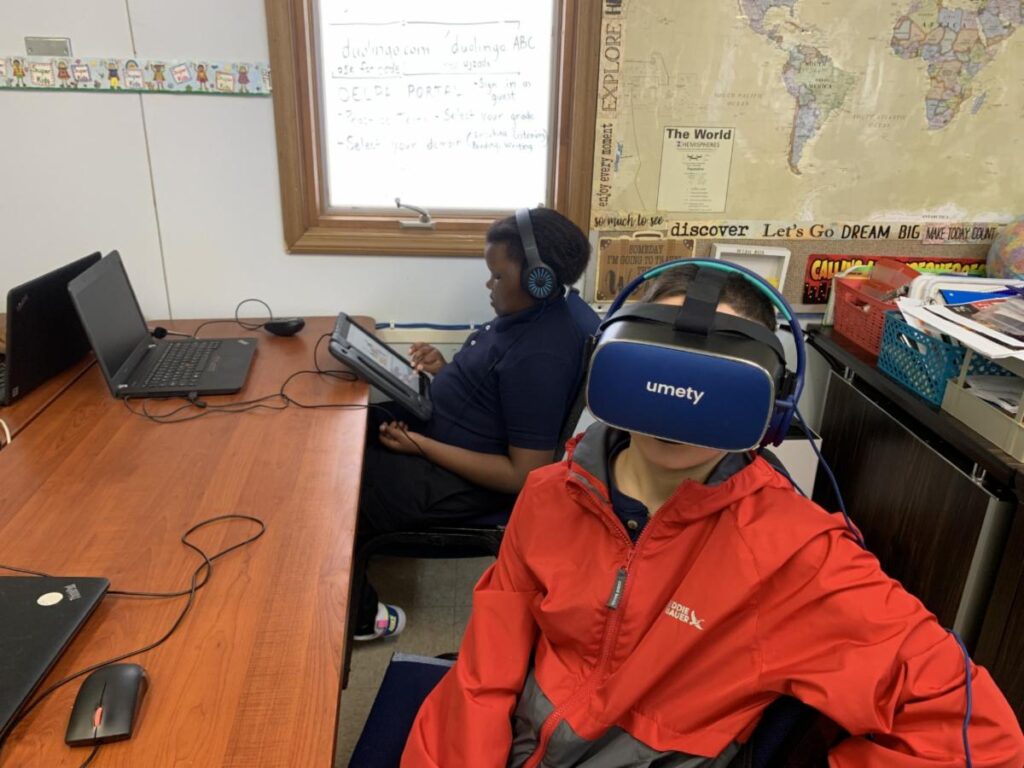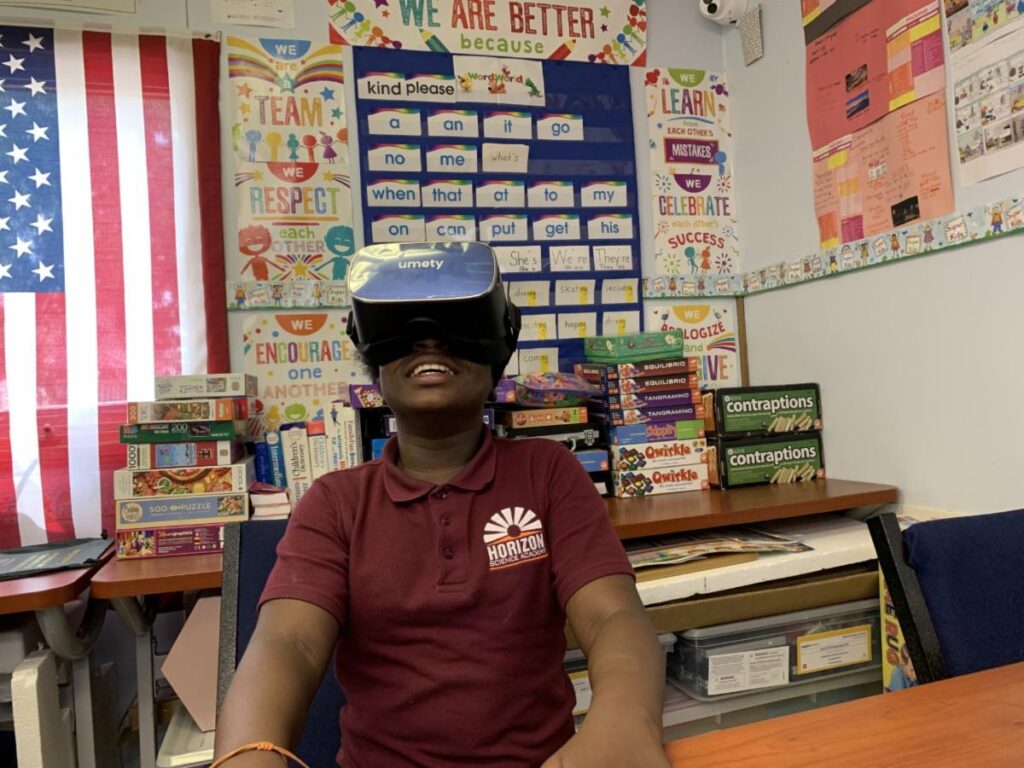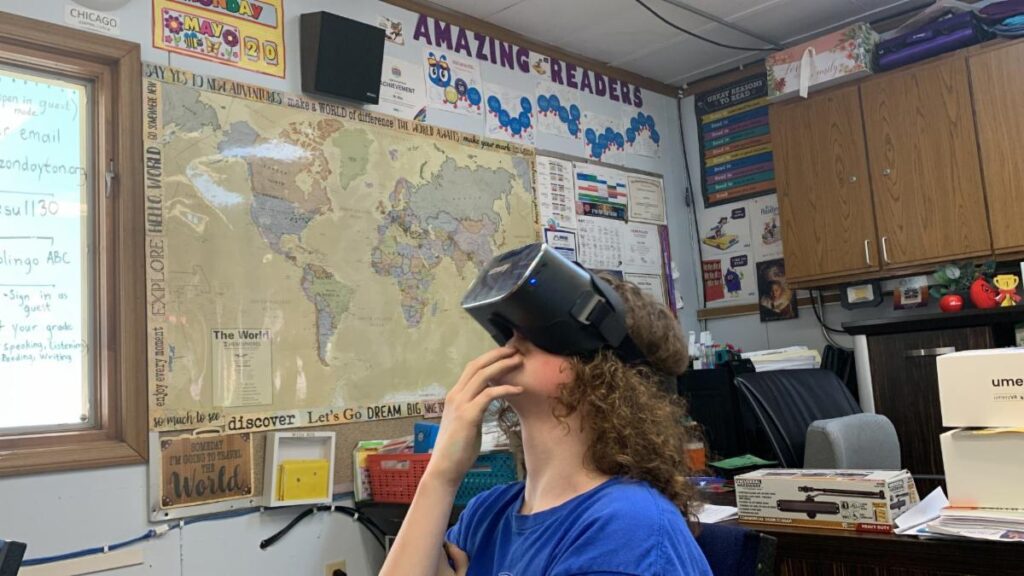At Horizon Science Academy, innovation in education isn’t just a buzzword, it’s a mission – and Assistant Principal of Academics, Aaron Wise, is leading the charge by bringing Virtual Reality (VR) into the classroom to transform English Language Learning (ELL).
Wise’s journey with VR began two years ago, during an unexpected moment of inspiration.
“I was preparing my speech for the Concept School Network’s Teacher of the Year ceremony,” he recalls. “I caught a glimpse of Apple’s new VR technology and was immediately impressed. I thought to myself, ‘this is something I need to bring into my classroom’, Since then, I’ve worked to bring VR into my classroom, allowing students to explore new places, practice conversations, and engage in lessons that truly bring language learning to life.”
To turn that vision into reality, Wise applied for the Ohio TESOL Mini Grant, highlighting how VR could address common challenges faced by ELL students, like limited background knowledge, language anxiety, and difficulty connecting academic content to real-world experiences. His proposal emphasized VR’s ability to create interactive, immersive simulations that build both vocabulary and confidence. The grant, along with support from Umety VR, made it possible to integrate VR into his classroom.
So how does it work? Wise uses the headset to place students in realistic scenarios, from planning a weekend with a friend to visiting museums and historical landmarks. These experiences not only make learning fun, but also give students a shared context to build vocabulary and practice conversational English in meaningful ways.
“After each VR experience, we spend time reflecting together,” Wise explained. “Students share what they did, how they felt, and what new words or ideas they picked up, all in English. It’s a hands-on approach full of language practice but, most importantly, it keeps the students at the center of their learning.”
One standout moment involved a shy newcomer student who had rarely spoken in class.
“After a VR trip to Paris, he excitedly described what he saw and volunteered to share for the first time. It wasn’t just new vocabulary. It was having something personal and exciting to talk about. That showed me how powerful it is when students connect with the content.”
Wise believes that VR offers advantages that traditional methods simply can’t match.
“VR allows students to experience language, not just study it,” he shared. “It lowers the affective filter—students aren’t worried about making mistakes when they’re immersed in a virtual world. It also levels the playing field for students who might not have had certain life experiences yet. For example, a student who has never been to an airport can practice airport conversations in VR before doing it in real life. That’s something a worksheet or textbook just can’t replicate.”
Students have responded with enthusiasm, often describing the experience as “like being inside a video game.”
“What excites them most is that it feels real,” Wise said. “They’re not just passively watching; they’re participating. They also love that they get to “travel” and explore places they’ve never been. For many of our students, especially those new to the country, VR gives them shared experiences they can discuss with peers, which helps build both language and friendships.”
Looking to the future, Wise sees VR becoming a staple in classrooms, especially for English learners. He imagines a world where students can practice job interviews, doctor visits, or classroom interactions with EL-specific content designed by educators themselves.
“At Horizon Science Academy, a Cognia-accredited STEM school, using innovative tools is not just encouraged, it’s part of our mission,” shared Wise. “When educators thoughtfully integrate technology like VR, we’re not just teaching language, we’re creating new ways for students to experience it, practice it, and apply it in real-life situations beyond the classroom. Thanks to the support of organizations like Buckeye Community Hope Foundation and Ohio TESOL, our English learners are stepping into the future with both language skills and the confidence to use them.”
Wise’s work is a testament to what’s possible when technology meets passion in the classroom—and when educators see not just what students are learning, but how they’re experiencing the world.



